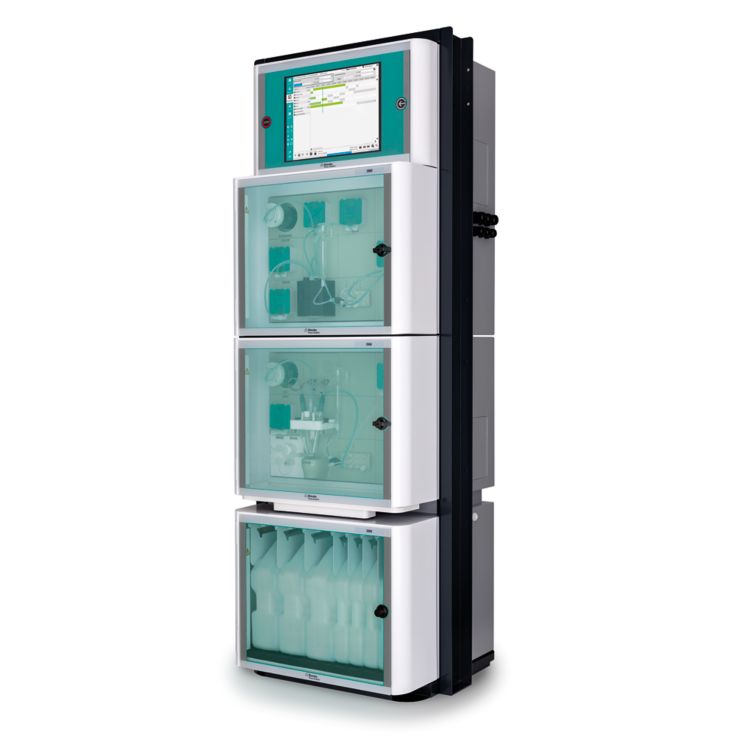Pure nickel is a silvery-white metal that is extremely hard, corrosion-resistant, and ductile. Due to these remarkable characteristics, the metal is largely used in coatings and surface engineering with many applications. Electroless nickel plating is an autocatalytic chemical technique to deposit a layer of nickel-phosphorus alloy on the surface of a solid workpiece. The process relies on the chemical presence of a reducing agent (sodium hypophosphite) which reacts with the metal ions for deposition. However, the lifespan of the plating bath chemicals is limited so there is a critical process control requirement to monitor the chemical consumption automatically. As the bath is used for longer periods, the electrolyte becomes overloaded with reaction products which negatively affects the surface and layer characteristics of the workpieces.
This Process Application Note presents a method to regularly monitor the active bath constituents in an electroless nickel plating bath to ensure an even layer of nickel-phosphorus alloy is deposited.
Electroless nickel plating baths facilitate the chemical reduction of nickel ions to the metal in acidic electrolyte baths. Here, sodium hypophosphite (NaH2PO2) is used as the reducing agent; with its help, a very corrosion-resistant nickelphosphorus alloy is deposited on the material surface.
The decisive reaction is the chemical reduction of the nickel and hydrogen ions by the hypophosphite leading to the deposited nickel and hydrogen gas (Reaction 1). Little hydrogen gas formation points to a missing or a slow nickel deposition. The quicker this reaction occurs, the lower the amount of phosphorus in the coating. On the other hand, more phosphorus is contained in the coating when the reaction is slowed down. Coatings with high amounts of phosphorus (10–14%) are very resistant to corrosion, whereas higher abrasion resistance is more readily achieved with a low phosphorus content (3–7%).
As nickel ions and hypophosphite are continuously consumed during the deposition process, the concentrations of these components must be kept within defined tolerances and continuously replenished to maintain consistent quality in the final product.
When the plating bath is in use, the concentrations of sulfate and sodium phosphite (NaH2PO3) steadily increase; this becomes the limiting factor when the bath is in use for a long time. As more nickel is deposited than phosphorus, more sulfuric acid than sodium hydroxide is formed as the process continues. This leads to a decrease in pH during nickel deposition which must be increased again by the addition of sodium hydroxide or ammonia. Only exact and reproducible determination of the process-relevant parameters can ensure that the consumed bath components can be replenished correctly to guarantee optimal process control.

Online monitoring of the pH, nickel, and hypophosphite content is possible with the 2060 Process Analyzer from Metrohm Process Analytics (Figure 2). All liquid handling steps such as taking sample aliquots, dosing of reagents, titration, and cleaning are performed by pumps and burets controlled by the process analyzer.
The analysis consists of transferring a sample aliquot either to the vessel for alkalinity and nickel analysis or to the vessel for sodium hypophosphite determination.
The 2060 Process Analyzer enables simultaneous, monitoring of diverse bath parameters with a single measurement, increasing measurement frequency. Nickel and pH are determined by online titration (Figure 3), and sodium hypophosphite is determined by potentiometric titration using a platinum electrode.
Manual data collection can affect product quality, reduce yield, and expose personnel to hazardous conditions. This robust process analyzer has the flexibility to automatically recognize the titration endpoint to guarantee reproducibility of results, and high reliability and dispense accuracy of the bath constituents. The 2060 Process Analyzer can be programmed to acquire data at regular intervals without needing to wait for laboratory results, and out-of-specification readings can immediately inform operators to take direct action.
| Analyte | Range |
|---|---|
| Ni as nickel sulfate (NiSO4) | < 10 g/L |
| NaH2PO2 | 1–12 % |
| pH | 4.5–5.0 |
Knowing the exact concentration of the active bath constituents in an electroless nickel plating bath is crucial since early measures can be taken if necessary. This includes the timely replenishment of the consumed components to ensure an even coating deposition and the separation of formed contaminants. Online monitoring of plating baths ensures the quality of the final product, meaning higher yields and less downtime as well as a reduction in operation costs by extending the bath life.
- Increased final product quality and metal turnover (MTO) due to online determination of bath parameters
- Fully automated diagnostics – automatic alarms for when samples are out of specification parameters
- Safer working environment and automated sampling
 Share via email
Share via email
 Download PDF
Download PDF